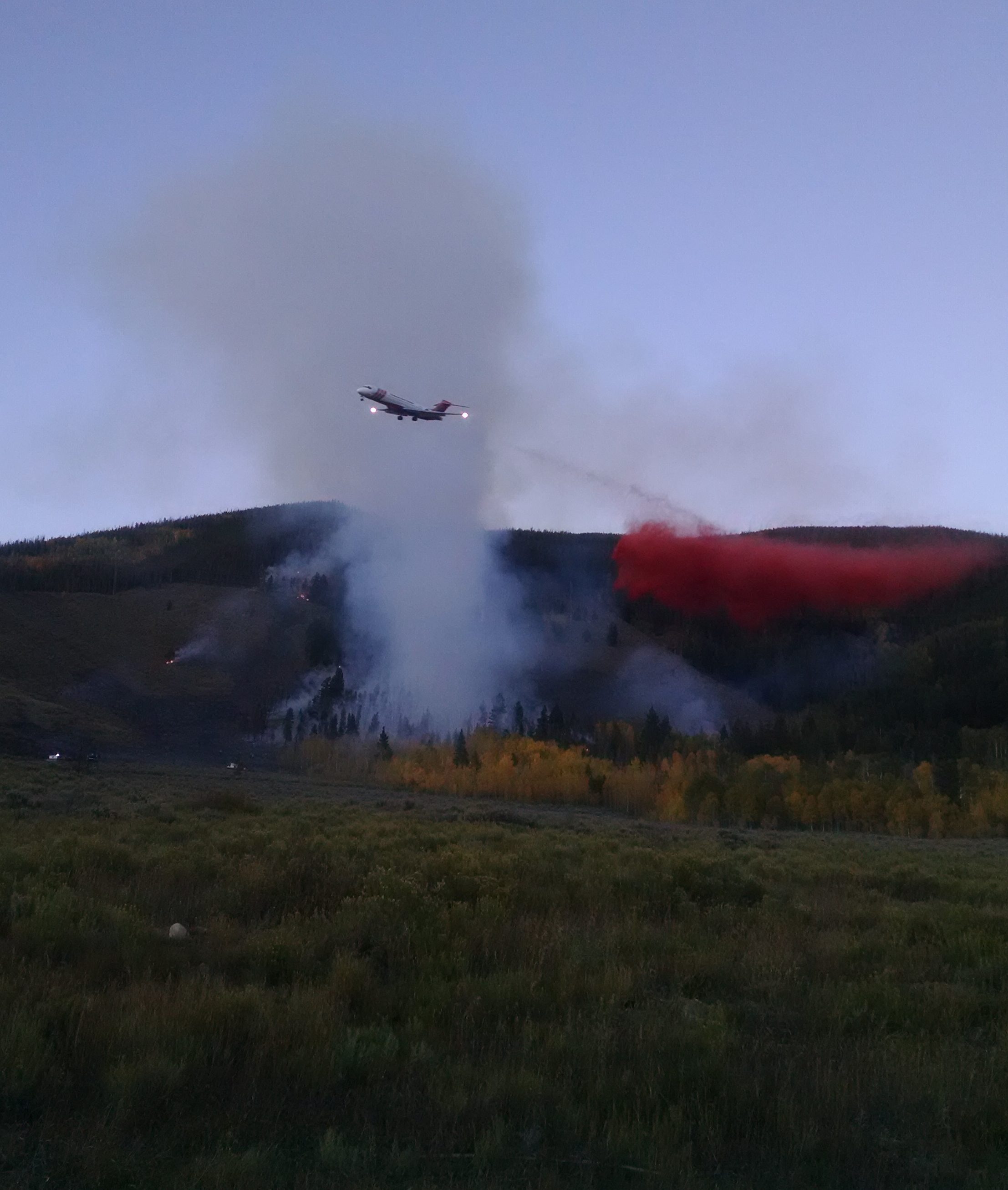
Bombs away — but don’t worry Denver’s water is ok
Images of bright red clouds descending over a blazing hill juxtaposed with the vibrant blue waters of Dillon Reservoir consumed social media and local news reports last week.
It started on the evening of Sept. 18, when the first slurry bomber buzzed over the flames of a 25-acre fire, called the Tenderfoot Fire 2, releasing fire retardant around the scorched land below.
The bombers were a scary but welcome sight for Denver Water’s Dillon Reservoir caretakers, who live with their families a football field away from the blaze. (Watch “Dillon wildfire hits close to home” to experience a wildfire too close for comfort.)
With a collection system spanning 2.5 million acres, this wasn’t the first time fire retardant was used in a watershed that supplies water to the Denver metro area.
But, the proximity of this battle to Denver’s largest reservoir begs the question of what suppression efforts could mean for water quality.
Specifically, what’s in that red stuff?
https://www.facebook.com/59377808931/videos/10155023168983932/
The retardant solution is mostly water (85 percent). Fertilizer makes up about 10 percent, and the remaining 5 percent is a mix of minor ingredients, including colorants that give it that bright red hue, to ensure the applicator can see it and apply adequate coverage.
According to Fred Sanchez, manager of water quality operations for Denver Water, the greatest potential for water quality impacts occurs after a fire is contained — during spring runoff and rain events.
“Denver Water’s water quality team continually collects samples and monitors our watersheds, and we increase monitoring during large fires, like we did during the Hayman Fire,” said Sanchez. “We’ve never detected any impacts from retardant being used in our watersheds, especially since it isn’t dumped directly in the rivers, streams or reservoirs.”
When a wildfire erupts, retardant is one of the quickest ways to stop the fire from spreading, as the mixture covers a large amount of vegetation at a time, acting as barrier to the trees and vegetation that ignite so easily.
For Denver Water, preventing a catastrophic wildfire is top priority. High intensity wildfires scorch the earth surrounding rivers and streams, leading to erosion. That sediment ultimately ends up in Denver’s reservoirs, which creates operational challenges and water quality issues, and clogs treatment plants.
A reality that Denver Water knows all too well. After the 1996 Buffalo Creek and 2002 Hayman wildfires in priority watersheds, restoration and repair efforts exceeded $27 million. Not to mention the centuries it will take for 150,000 acres of charred lands, which make up the first filtration process for Denver’s source water, to recover.
It’s why Denver Water has invested millions in source water protection, like through the From Forests to Faucets partnership with the U.S. Forest Service.
“We have learned firsthand the devastating and long-term impacts a catastrophic fire can have on water quality,” said Sanchez. “It’s important that we allow fire responders to do what it takes to ensure we don’t experience another Hayman or Buffalo Creek-type of fire in any of our watersheds.”

